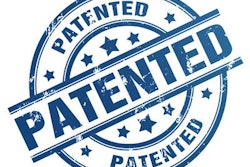
Due to 40 CFR Part 441 (the U.S. Environmental Protection Agency [EPA] amalgam rule), July 15, 2020, became the first day in U.S. history that any dental office that removes amalgam mercury in the ordinary course of patient restorations is required, by federal rule, to have an amalgam separator capture the mercury particulates before they go down the drain.
In all honesty, and despite the fact that I have dedicated almost seven years of my life to understanding and promoting the EPA amalgam rule, I would like to be the first to say that everything I write is, by definition, small potatoes compared to the need for dental offices to implement safe COVID-19 protocols for their staff and patients.
 Alexander Bischoff.
Alexander Bischoff.As I said to my own dentist recently (Jason Acevedo, DDS, who installed a Solmetex separator under the voluntary compliance program of 2008-2012), "unless you have found a way to work through the back of my head, I am literally about to place my life in your hands," as I lay beneath him, with my mouth wide open, breathing.
I think it was more his understanding of my passion for helping dental offices comply with this rule, in the name of my late daughter Stephanie Griffiths, than any profound regulatory wisdom he thought I might have gleaned that had him pause and listen to me.
The issue is simple
In a world driven by equipment sales, most dental offices have wishfully hoped that having a compliant amalgam separator installed by July 14 would satisfy the requirements of the EPA rule.
I understand why few would ask their equipment representative to complicate matters by bringing up the small print of the rule. No one wants to be told something they do not want to hear. And even less that the separator installation initiated a program of operational protocols, accompanied with severe federal penalties if ignored. Talk about ignorance being bliss!
What you must know
The rule, with its explicit requirements for operating the amalgam separator, and keeping records of such, went into effect as the clock struck midnight on Wednesday, July 15, 2020.
There are three things every dental practice must do:
- A dental discharger is required to operate the separator in accordance with the manufacturer's operating manual.
- A dental discharger is required to follow two best management practices (BMPs) as included in the federal rule, and any others required by a state or local authority.
- A dental discharger is required to maintain records for three years of separator inspections, separator servicing, and recycling/disposal of amalgam containers.
One x Compliance Report
All dental dischargers are required to submit a One x Compliance Report to their control authority before October 12, 2020.
Federal declaration
Section E of the One x Compliance Report carries a warning that it is a felony offense to make a false declaration in the information provided.
I urge all dental offices to visit the 501(c)(3) website Stephanie Smiles. Watch the video I produced, follow the links, and read the American Dental Assistants Association (ADAA) newsletter that covers sections 441.30 and 441.50, which set out the ongoing requirements under the rule.
If you have a Solmetex Hg5 separator (as many will have, if my information is correct), please download a copy of the recordkeeping form we have developed.
First, inspect the separator and then record the date, who did the inspection, and the fact that it was operating correctly by July 22 at the latest and each week after. If you do not do this, you will have to lie on your federal declaration or confess to being in default of 441.50 (b).
If you do not have a separator installed for which you can attest to its operation in accordance with the rule, be watching for potential next steps and ramifications. Will there be a path to late redemption? Many of us are watching to see if one appears.
This federal rule has been 16 years in the making. The EPA has patiently waited out the three years to July 14, 2020, for final compliance. The installed separator will address the issue of pretreatment and capturing the amalgam mercury particulates before they go down the drain. The lesser-known requirements, which I bring to your attention, are what makes the rule effective. They prevent your separator from bypassing, and/or the amalgam mercury in your separator from dissolving and making things way worse, as in discharging soluble mercury.
Alexander (Alex) Bischoff is president of Operation Savannah, a 501(c)(3) nonprofit that provides education to veterans and parents battling post-traumatic stress disorder. In 2014, Stephanie Smiles was formed with the mission of using the internet to educate and equip the dental industry, including to support dental offices in complying with the EPA amalgam rule.
The comments and observations expressed herein do not necessarily reflect the opinions of DrBicuspid.com, nor should they be construed as an endorsement or admonishment of any particular idea, vendor, or organization.



















